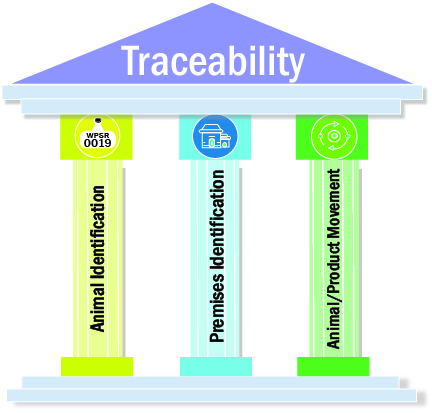Traceability
Traceability is an important effective tool that can be used to prevent and respond to animal health or food safety emergencies and make Canadian food products more desirable.
Traceability makes it possible to follow the movement of animals, plants and food through all points of a production system between the farm and the consumer.
If traceability is in place and there is a concern, the problem can be traced right back to its source and handled with greater speed and confidence, and less damage and less waste.
Traceable animal and food products are also becoming more popular in domestic and international markets. Some food companies now insist that their product or ingredient suppliers are part of a traceability program.
For all of these reasons, traceability makes good business sense for animal and food producers and processors. Today, governments across Canada are working with the food industry to strengthen the traceability systems.
In this section you can learn about the three pillars of traceability for the livestock and poultry industry.

In this section, you can also find information about:
Traceability as an Emergency Management Tool
- Helps to prevent, prepare for, respond to and recover from animal, plant or food emergencies.
- Enables the flow of information across the agrifood chain, thereby reducing the economic impacts of an emergency.
- Can significantly reduce response time during an animal disease outbreak by helping to contain the introduction and spread of such contagious diseases (ex: Foot and Mouth Disease in swine, cattle, sheep and goats, and avian influenza in poultry).
- Can reduce the economic, social and environmental impacts of other types of emergencies, such as a food safety issue or a natural disaster (ex. wildfires, floors, boil water advisories).

